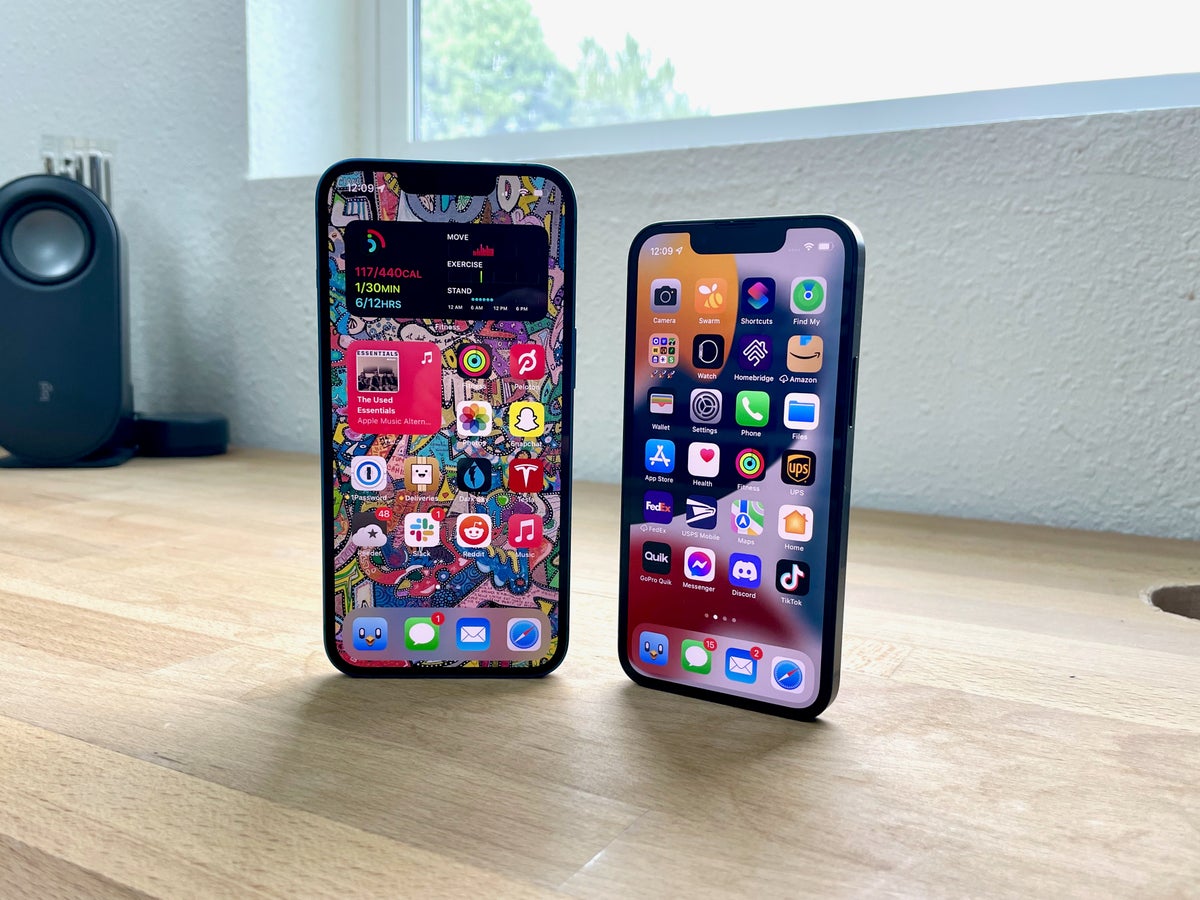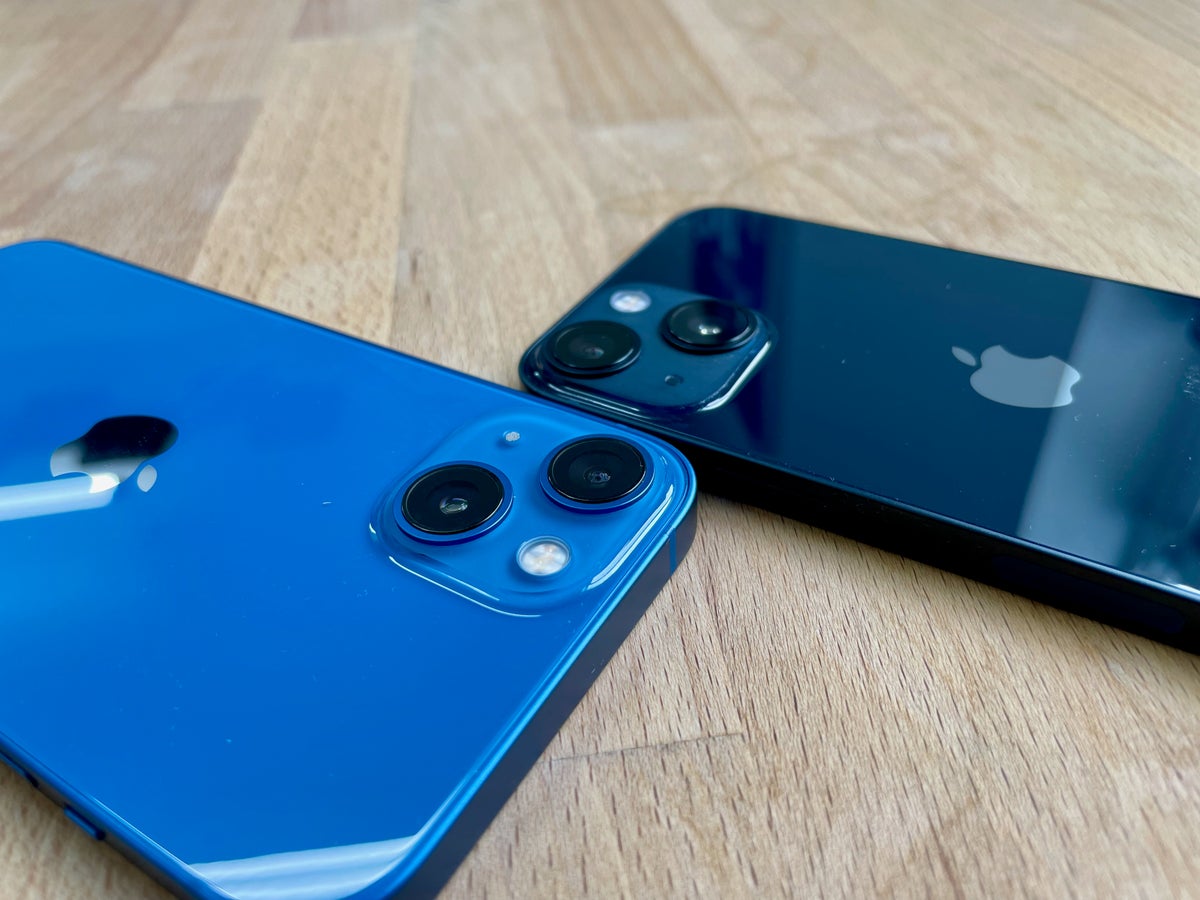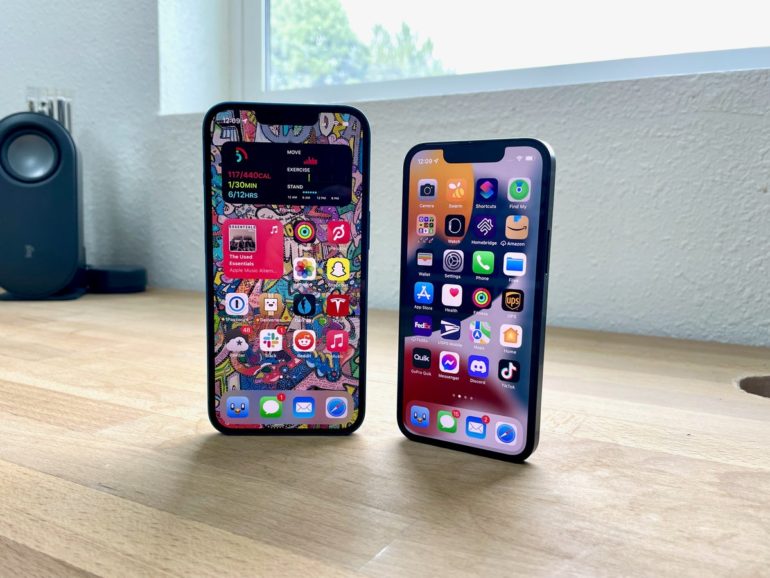After testing the iPhone 13 Pro and iPhone 13 Pro Max, it’s clear that both models are the best iPhones available right now. But they’re also the most expensive, with prices starting at $999 and $1,099, respectively.
Filling in the rest of Apple’s 2021 smartphone lineup is the $799 iPhone 13 and $699 iPhone 13 Mini. Both phones offer a similar experience to their more expensive counterparts, saving users some money in the process.
I’ve been testing the iPhone 13 and 13 Mini for the last week, and it’s clear to me that both options are worth every penny. (The majority of my testing was done on the iPhone 13.)
Exactly what are you missing out on, and does it really matter at the end of the day? Below, I answer those questions, plus many more.

The iPhone 13 and iPhone 13 Mini.
Jason Cipriani/ZDNet
Design
The iPhone 13 and 13 Mini look similar to the Pro models but have a few differences. They both have an aluminum housing instead of stainless steel and five bright color options. There’s Product(RED), starlight (an off-white color), midnight (black), pink and blue.
The Pro models have a matte-like finish to their color options, but the standard iPhone 13 models are the exact opposite. They’re bright and glossy. I prefer these color options over the Pro models, especially the blue color. It looks fantastic.
Top ZDNET Reviews
On the back is a new camera lens arrangement. Not only are the lenses much bigger than last year’s model, but they’re also arranged differently. Instead of being vertically stacked, the lenses now are now staggered.
The flat edge design we saw Apple switch to with the launch of the iPhone 12 last year remains. On the right edge of the iPhone 13 and 13 Mini, you’ll find the power button, or side button, as Apple calls it. On the left side are the mute switch and the volume up/down keys, as well as the SIM card tray.
Apple’s tried and true, if not outdated, the Lightning port is still present on the bottom of the phone. My feelings about switching from Lightning to USB-C for the iPhone 13 and 13 Mini aren’t as strong as they are for the Pro models, but one has to think that some sort of switch is in the works.
The notch that holds where the True Depth Camera system that powers Face ID is housed has shrunk just a bit. It’s not as wide as it was in previous models, but it is slightly taller.
The iPhone 13 has a 6.1-inch display, while the iPhone 13 Mini keeps its 5.4-inch screen.
Both sizes feel great in the hand, with the smaller option being the easiest to use one-handed at all times. Even the iPhone 13 is comfortable to use with a single hand.


The iPhone 13 and iPhone 13 Mini have new camera arrangements.
Jason Cipriani/ZDNet
Performance, camera and battery
Things get interesting when it comes to performance and the overall experience of the iPhone 13 or 13 Mini. On the inside, the phones are practically identical to the Pro models, save for a smaller battery in the Mini. They both feature the same A15 Bionic processor, 5G connectivity, and a brighter OLED display.
The change in display brightness is most noticeable when using the phone outside — it’s much easier to see what’s on the screen. The iPhone 13 models aren’t equipped with ProMotion, a feature that debuted on the iPhone 13 Pro and iPhone 13 Pro Max this year. ProMotion is a fancy name Apple gave its variable refresh rate display tech. The screen on the Pro’s can go anywhere from 10Hz to 120Hz based on what you’re doing on the phone. It’s a subtle but noticeable feature but not a must-have.
I noticed a difference in the display for the first day or so after switching from the iPhone 13 Pro Max to the iPhone 13 for testing. But after that initial adjustment, I’ve had nothing but a good experience with the screen on either 13 models.
Another area where the iPhone 13 differs from the iPhone 13 Pro is the rear cameras. The iPhone 13 has two 12-megapixel cameras, while the Pro has three.
There’s a wide camera, which is the main camera you’ll likely take most of your photos and videos with. Then there’s the ultra-wide camera that allows you to zoom out on an image or during a video without having to move physically. The lack of the third camera, a telephoto lens to zoom in, was something I didn’t think would matter all that much in my daily use, but I was wrong. I missed the telephoto lens. The ultra-wide camera offers 2x optical zoom out, while the main wide camera adds 5x digital zoom.
My favorite part about the camera set up on the iPhone 13 and 13 Mini, however, is the fact that both phones have the same Cinematic Mode for recording video as the Pro models. Normally a feature like that is something Apple reserves for the more expensive and presumably more capable iPhone models.
In the camera app, there’s now a Cinematic Mode option. When selected, you can record a video that adds a blurry background or foreground effect. It’s something that we’ve all seen in movies, and up until now, it has been really difficult to recreate on a smartphone.
Here’s a short clip I made in my office with the iPhone 13 just this morning. Notice how the focus shifts from the drone in the foreground to the drone in the background, and vice versa? That’s Cinematic Mode.
I haven’t noticed any difference in performance between the Pro and non-Pro models. That is, Cinematic Mode still works really well in an environment with plenty of light and struggles in low-light environments.
Outside of missing the telephoto camera on the iPhone 13 and iPhone 13 Mini, the camera experience has been on par with the Pro models. The decision to integrate Cinematic Mode across all four models is something I’m still surprised was made, but I’m all about it.
This year, Apple touted improved battery life for all four iPhone 13 models, and my experience matches that. The iPhone 13 has enough power to get through a full day of use, and the Mini gets close. Last year, I failed to get past 7 pm before the iPhone 12 Mini was depleted. The 13 Mini goes an hour or two beyond that before calling it quits.
The base storage has doubled this year, with 128GB being the lowest you can get for the starting price. You can bump up the storage to 256GB or 512GB if you need more space.
Bottom line
After testing all four iPhone 13 models, it’s clear to me that the standard iPhone 13 is good enough to be the best option for most people. It’s affordable and has the same performance, battery life and camera features as its Pro equivalent.
If you have an iPhone 12, there’s not a whole lot of incentive to rush out and pick up an iPhone 13. For everyone else, the iPhone 13 is a worthy upgrade or first iPhone.
You can order the iPhone 13 or iPhone 13 Mini right now, but be prepared to wait. All models are currently shipping in a couple of weeks.
